General Information
2021 – The Burson Soloist 3X GT is the embodiment of our innovative spirit. It is the first headphone amp in the world that works so hard it needs active cooling.
Through research and over-engineering, we turn unconventional approaches into design benchmarks, And we thank all the like-minded audiophiles who appreciate our approach and witness our progress.

Under the bonnet, the GT has two independently powered mono amps in mirrored symmetry. The resulting pitch-black soundstage and crisp details are breathtaking!
The thumping heart of the Soloist GT is 5 sets of Burson Max Current Power Supplies. We are pushing these MCPS to the limits of their potential. So much so that they consume 90W when idle and need active cooling.
Although spitting out 10 Watts, the GT is not tracing power. Instead, it pursuits purity. So if you ever wonder what Norah Jones really sounds like, this dream machine takes you there!
The GT uses three V6 Vivid opamps per channel, achieving incredible transparency. However, it still plays to your preference by allowing opamps to change, enabling you to create your own listening experience.
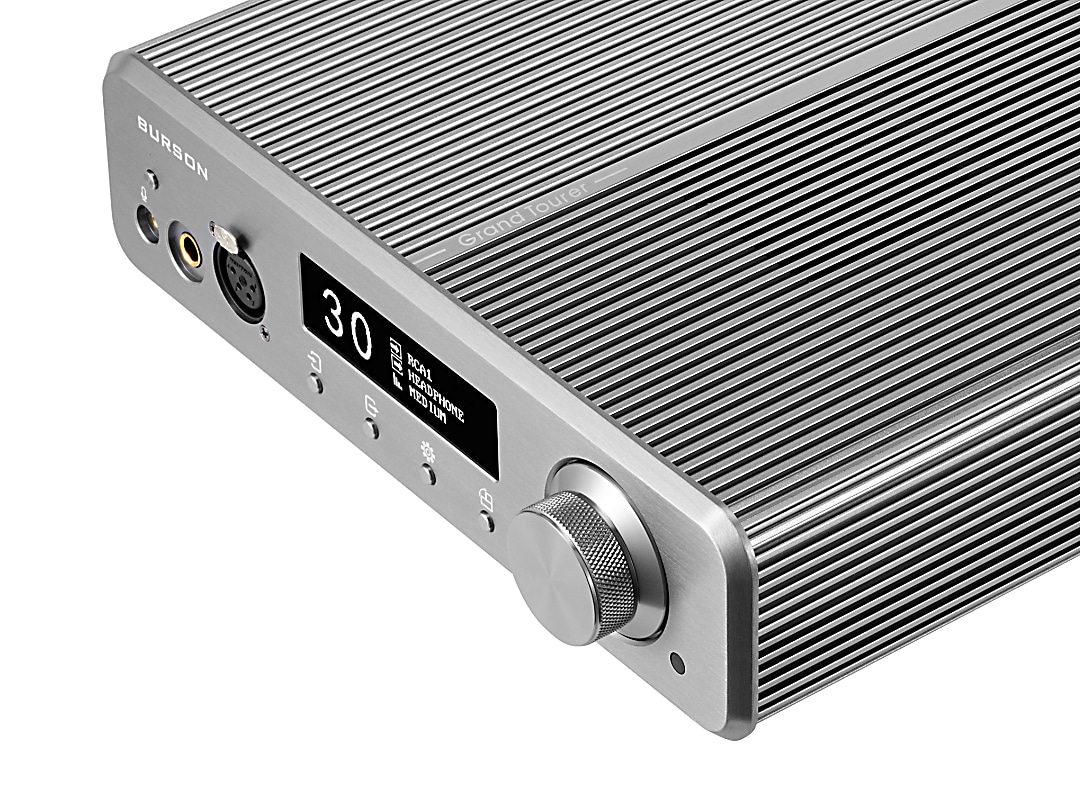
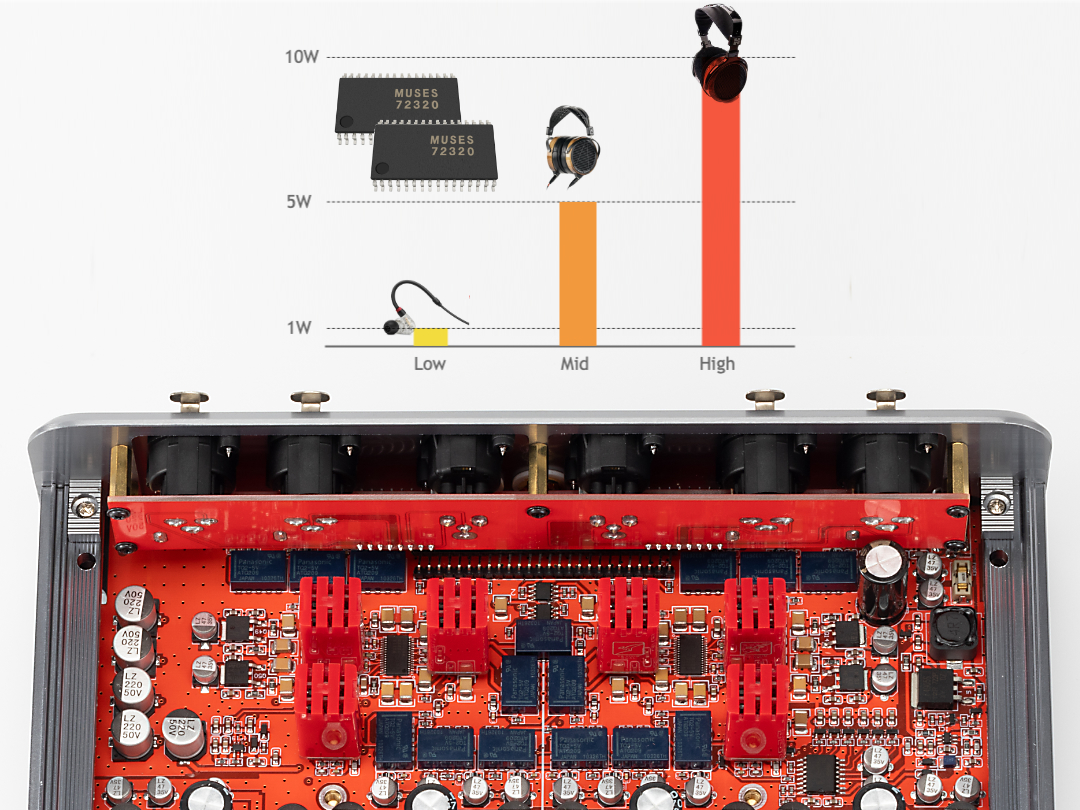
The Soloist GT goes further by using one MUSES72320 + V6 Vivid discrete buffer volume control per channel, eliminating any chances of cross channel interference.
Some headphone listeners use software to create that crossfeed, but such DSP often create other distortions.
The Soloist GT has three levels of hardware-based crossfeed emulation. So you can listen to your favourite track, exactly the way you like it!
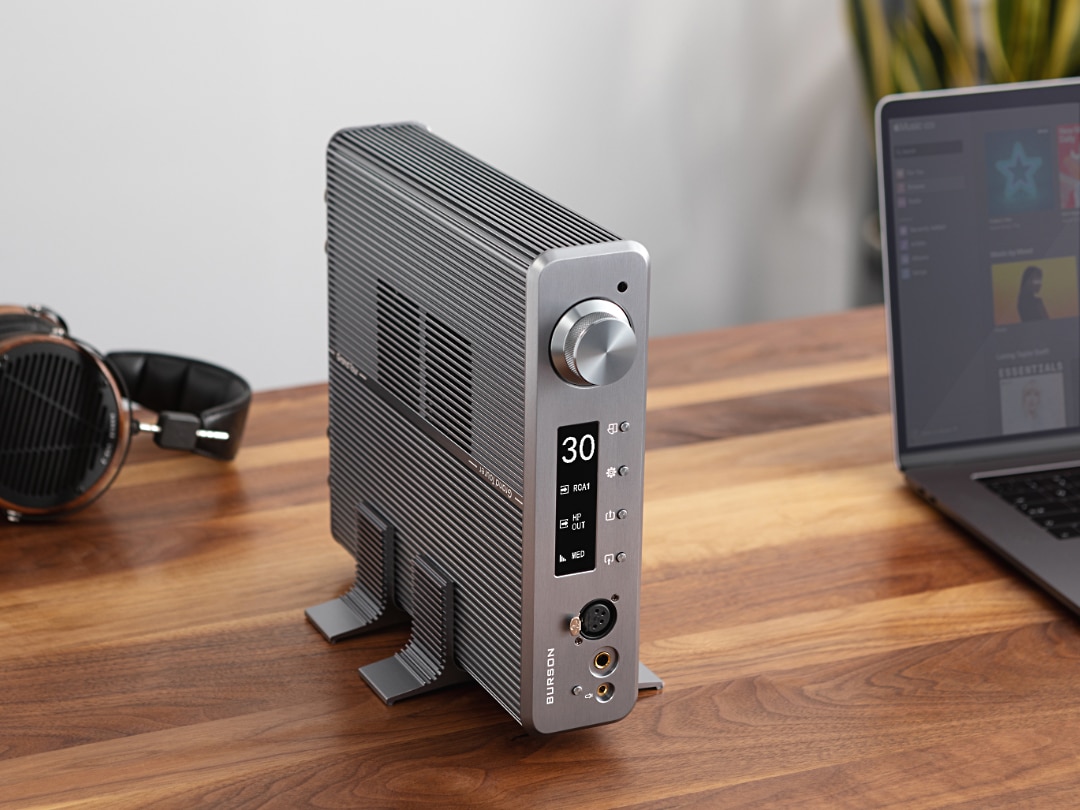

Our Burson Cool Case is already the most oversized heat sink on any headphone amp. Still, we adopted active cooling for the GT.
With every component operating in a predetermined temperature range, independent of the environment, active cooling gives us the freedom to push the GT to its performance limit.
To eliminate wind noise, we designed a new enclosure to enhance stiffness and reduce resonance. Combining this resonance-free enclosure with the quietest fan money can buy from Noctua in Austria, wind noise sits below 25dBA. In comparison, an empty recording studio has over 30dBA of ambient noise. So, the GT is quieter than the background ambience of your music.
Who can afford a fully symmetrical, sound-treated home auditorium? For everyone else, it is so typical to have a door or window near one speaker and a bookshelf near the other. These elements distort the sound stage.
With one MUSES+V6 Vivid volume controller per channel, you can adjust the volume of each stereo speaker separately. Bring you closer to that perfect sound stage previously reserved for the fortunate few!
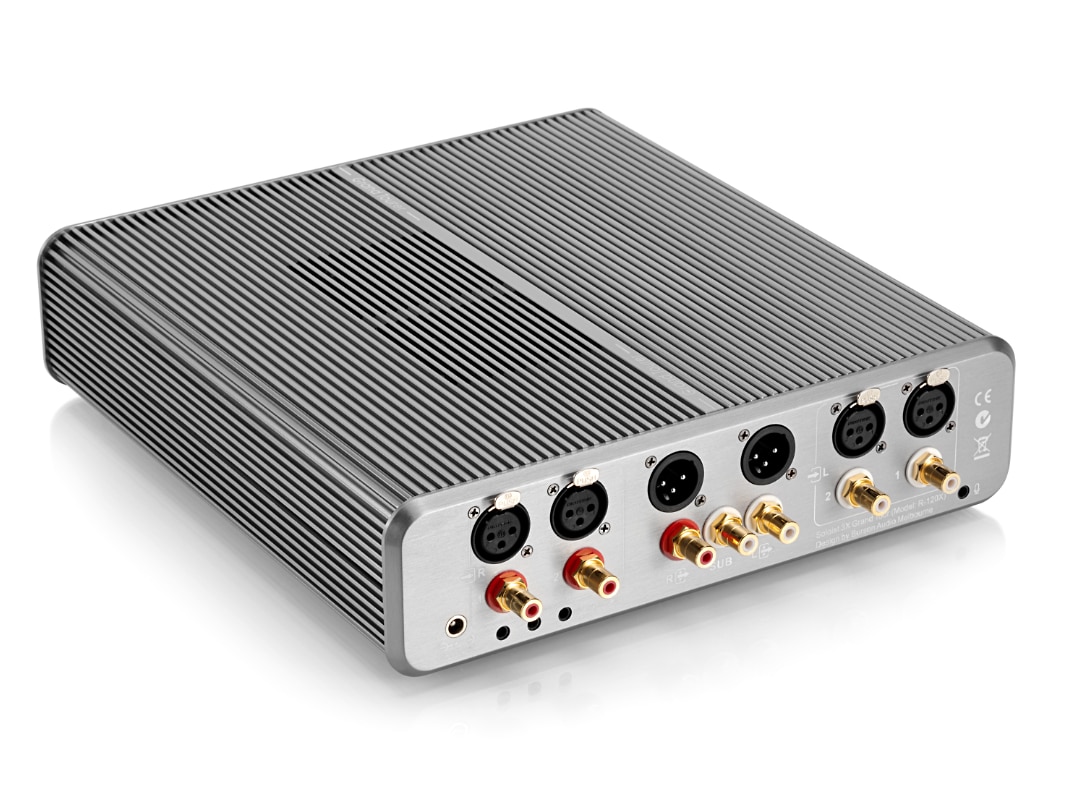
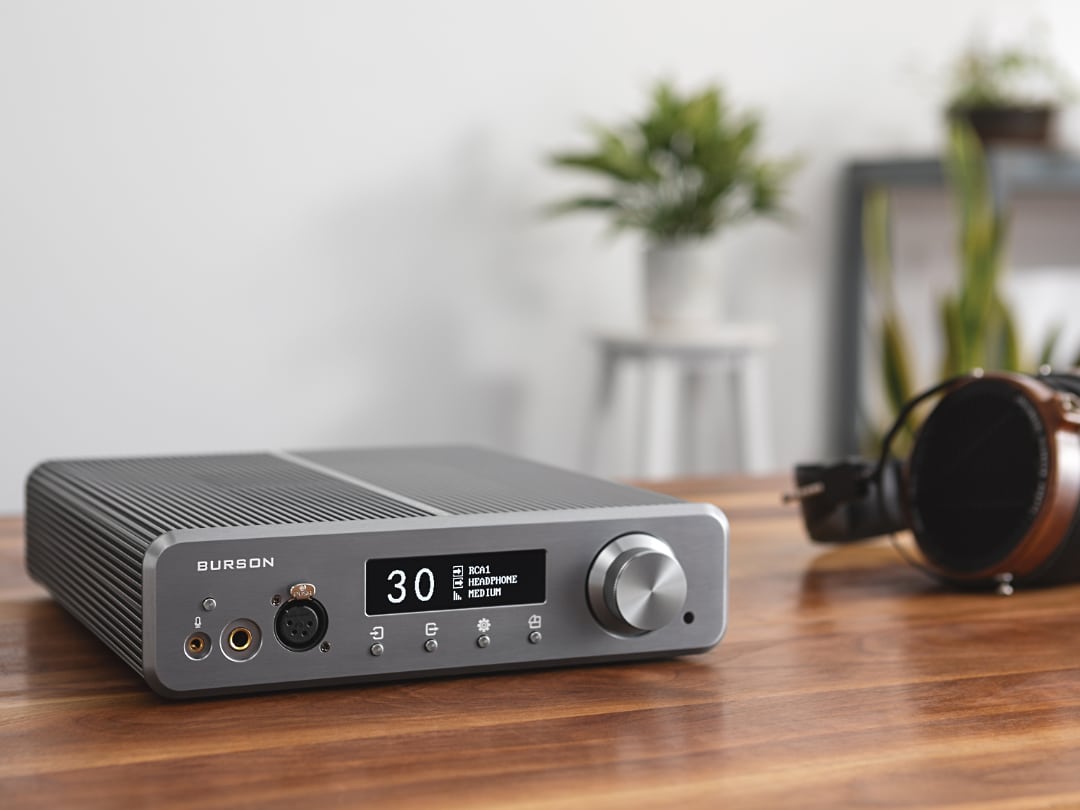
Headphone listening goes to a new level with a carefully matched and placed subwoofer. The GT enables this experience with its Head+Sub mode.
The Soloist 3X GT is a drive for perfection. Headphones may change, and digital formats come and go, but this analogue performer is timeless.
It let us hear and feel more. So fire up the GT, and ride down memory lane. Revisit moments when life changed tracks and the songs enriching the journey.
Through research and over-engineering, we turn unconventional approaches into design benchmarks, And we thank all the like-minded audiophiles who appreciate our approach and witness our progress.

Symmetrical through and through
You can’t judge a book by its cover, but you can judge circuitry by its layout. Symmetrical dual-mono is beautiful and achieves the highest possible audio performance.Under the bonnet, the GT has two independently powered mono amps in mirrored symmetry. The resulting pitch-black soundstage and crisp details are breathtaking!
Powering the GT
The thumping heart of the Soloist GT is 5 sets of Burson Max Current Power Supplies. We are pushing these MCPS to the limits of their potential. So much so that they consume 90W when idle and need active cooling.
Although spitting out 10 Watts, the GT is not tracing power. Instead, it pursuits purity. So if you ever wonder what Norah Jones really sounds like, this dream machine takes you there!
Symmetrical Audio Paths
The V6 Vivid discrete opamps are wildly regarded as the best globally and used in countless recording studios.The GT uses three V6 Vivid opamps per channel, achieving incredible transparency. However, it still plays to your preference by allowing opamps to change, enabling you to create your own listening experience.


Elitist Volume Control X 2
The typical stereo volume control creates lots of cross channel interference. Industry aristocrats such as Pass Lab and AVM use the MUSES72320 volume control to reduce such distortion in their flagships preamps.The Soloist GT goes further by using one MUSES72320 + V6 Vivid discrete buffer volume control per channel, eliminating any chances of cross channel interference.
Headphone Crossfeed
Live music and loudspeaker sound arrive at your head mixed. It gives you a sense of positioning. Most recording engineers also work under the assumption that their tracks will be playing through stereo speakers, not headphones.Some headphone listeners use software to create that crossfeed, but such DSP often create other distortions.
The Soloist GT has three levels of hardware-based crossfeed emulation. So you can listen to your favourite track, exactly the way you like it!


GT Cool.
Our Burson Cool Case is already the most oversized heat sink on any headphone amp. Still, we adopted active cooling for the GT.
With every component operating in a predetermined temperature range, independent of the environment, active cooling gives us the freedom to push the GT to its performance limit.
To eliminate wind noise, we designed a new enclosure to enhance stiffness and reduce resonance. Combining this resonance-free enclosure with the quietest fan money can buy from Noctua in Austria, wind noise sits below 25dBA. In comparison, an empty recording studio has over 30dBA of ambient noise. So, the GT is quieter than the background ambience of your music.
Speaker Centering
Who can afford a fully symmetrical, sound-treated home auditorium? For everyone else, it is so typical to have a door or window near one speaker and a bookshelf near the other. These elements distort the sound stage.
With one MUSES+V6 Vivid volume controller per channel, you can adjust the volume of each stereo speaker separately. Bring you closer to that perfect sound stage previously reserved for the fortunate few!


Head+Sub Mode. Say what!?
We feel sound as much as we hear sound. Before the invention of headphones, music listening has always been a full-body experience. It’s not just what your ears can hear but all the energy that your body feels that move the soul.Headphone listening goes to a new level with a carefully matched and placed subwoofer. The GT enables this experience with its Head+Sub mode.
Rev it up!
The Soloist 3X GT is a drive for perfection. Headphones may change, and digital formats come and go, but this analogue performer is timeless.
It let us hear and feel more. So fire up the GT, and ride down memory lane. Revisit moments when life changed tracks and the songs enriching the journey.








 However, I do appreciate that Burson implemented a neat Auto Power Off feature that can be activated from the Settings menu, so Burson was thinking to save some electricity cash when the amplifier is not used for a while or if simply the owner forgets to power it off. This makes the device more eco friendly, even if we’re talking about a Class A amplifier.
However, I do appreciate that Burson implemented a neat Auto Power Off feature that can be activated from the Settings menu, so Burson was thinking to save some electricity cash when the amplifier is not used for a while or if simply the owner forgets to power it off. This makes the device more eco friendly, even if we’re talking about a Class A amplifier.



































